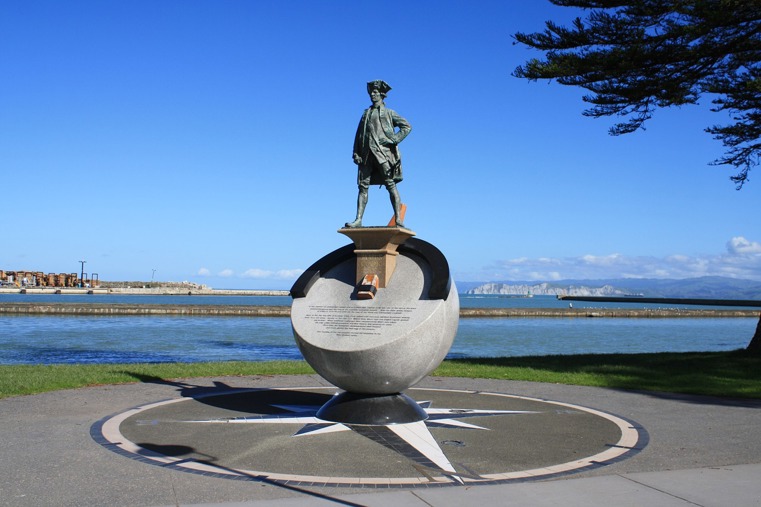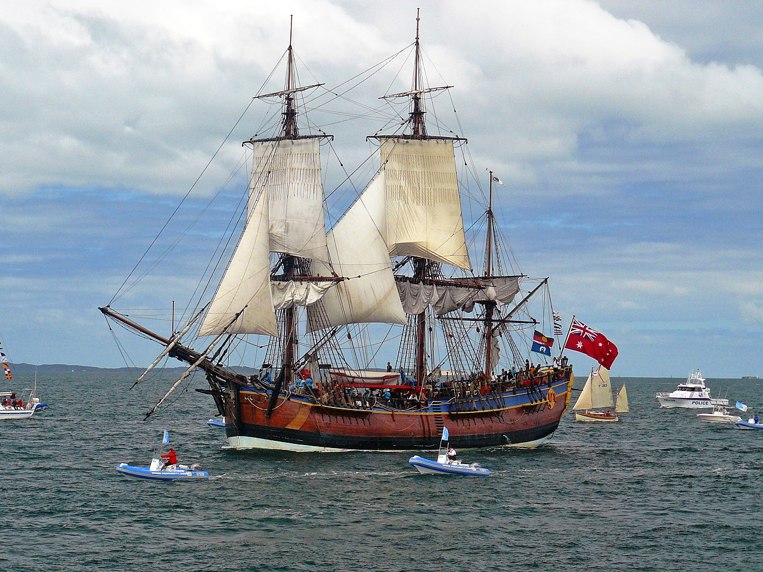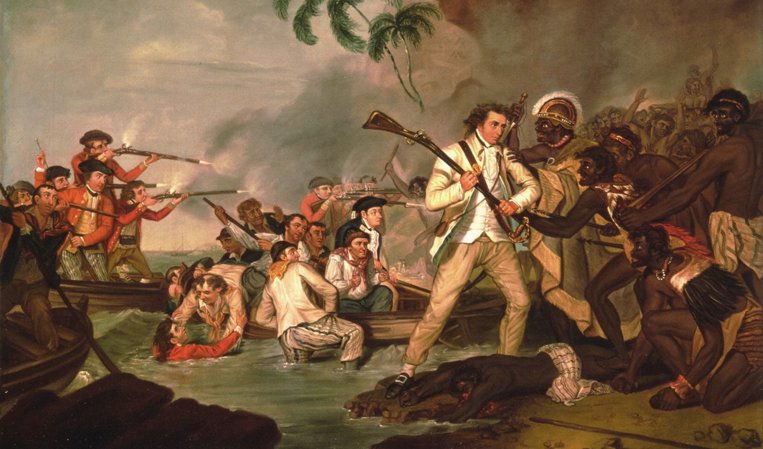13 Jan
2023
JAMES COOK

"I intend to go not only farther than any man has been before me, but as far as I think it is possible for a man to go."
Recently, on November 7, it was the 290th anniversary of the world's probably most famous explorer James Cook (7 November 1728 – 14 February 1779) – a British explorer and captain in the Royal Navy. We at Running on Waves are passionate about creating experience of sailing in its originality, and honor the heroes of the Age of Discovery. Isn't it the same feeling – passion to voyages and discoveries – that ruled James Cook on his way from the early years in a family of a Scottish farmer to the glory of a famous explorer?
JAMES COOK'S SHIPS
The names of James Cook's ships — Endeavour, Resolution, Adventure, and Discovery — are said, by some, to summarize Cook's own character.
Agree! Though of course, the ships' names had not been chosen intentionally to match James Cook's character. What a fact is that all the four ships were renamed to suit more to the voyages' spirit: HMS Endeavour was originally named Earl of Pembroke; HMS Resolution started her career as Marquis of Granby; HMS Adventure's original name was Marquis of Rockingham; HMS Discovery was launched as Diligence.
RUNNING ON WAVES
Having an amazing story of naming our own ship (Running on Waves got her name by chance from the 11 year-old girl), we state that a ship's name determinates her nature.
After getting her name, Running on Waves was noticed by her crew not cutting high waves like an iron, but sliding along the ridges as if running on waves – just like her name advises.
From those four ships, HMS Resolution (1771) on which Captain James Cook made his second and third voyages of exploration in the Pacific, was his favourite. Cook called her "the ship of my choice", and "the fittest for service of any I have seen." What was so special in Resolution?
HMS Resolution was ex-mercantile collier. She was fitted out with the most advanced navigational aids of the day, ice anchors and the latest apparatus for distilling fresh water from sea water. HMS Resolution was responsible for some remarkable feats: she was the first ship to cross the Antarctic Circle (17 January 1773) and crossed twice more on the voyage. The third crossing on 3 February 1774 was the deepest penetration – Latitude 71° 10' South, Longitude 106° 54' W. The voyage lasted 3 years.
To make the HMS Resolution's and her team's achievements more vivid, let's compare her characteristics with those of Running on Waves as an example of modern sailing ship.
HMS Resolution VS S/V Running on Waves
Voyage duration: 3 years VS 2 weeks
Passengers: 112 VS 40
Crew: 20 VS 21
Length: 33.73 m VS 64.00 m
Beam: 9.30 m VS 9.50 m
Draught: 3.99 m VS 3.20 m
Tonnage: 462 GT VS 630 GT
Propulsion: sails VS sails, Volvo Penta D16MH
Speed: 8 knots VS 17 knots
Now you see? You can easily go to 3-years expedition to Antarctica aboard Running on Waves :) Jokes aside, let us conclude with these lines:
"There was a time before our time,
It will not come again,
When the best ships still were wooden ships
But the men were iron men."
Though Resolution was the Cook's favourite, it's another vessel that had become most popular — HMS Endeavour. After her two NASA's space vehicles were named; she is depicted on the New Zealand's 50 cent coin; the fictional HMS Endeavour appears in the film Pirates of the Caribbean: At World's End.
Interestingly, Endeavour was the first ship on which the longitude was reckoned without use of chronometer.

HOW DID COOK FIND HIS LONGITUDE (AND HOW CAN WE USE HIS METHOD?)
Our Captain will share his astronomic navigation knowledge with you enthusiastically (as he always does). More than that, you'll be able to find your latitude and longitude yourself using a sextant — a special instrument that we have aboard for romantic fellows.
James Cook did not have a chronometer on board during his first voyage on Endeavour. H4 chronometer was the only one then in existence and that was far too precious to send on a highly risky voyage. So what did Cook use to know how far the ship was east or west of Greenwich? He used the method of lunar distances.
We will not describe here details of the method though it is really fascinating to find your coordinates in the open sea without GPS. On board Running on Waves our Captain Grigoriy will share his astronomic navigation knowledge with you enthusiastically (as he always does). More than that, you'll be able to find your latitude and longitude yourself using a sextant — a special instrument that we have aboard for romantic fellows.
Now, astronomic navigation is not used – we have an advanced positioning system on Running on Waves. We do not throw away sextants however :)!

JAMES COOK'S CONTRIBUTION
Cook's three voyages (12 years sailing) around the Pacific Ocean contributed much to knowledge of the area. He investigated uncharted areas of the globe and mapped lands in the Pacific Ocean in details and on a scale not previously achieved.
In 1779, while the American colonies were fighting Britain for their independence, Benjamin Franklin wrote to captains of colonial warships at sea, recommending that if they came into contact with Cook's vessel, they were to "not consider her an enemy, nor suffer any plunder to be made of the effects contained in her, nor obstruct her immediate return to England by detaining her or sending her into any other part of Europe or to America; but that you treat the said Captain Cook and his people with all civility and kindness ... as common friends to mankind." Unknown to Franklin, Cook had met his death a month before this safe conduct "passport" was written.